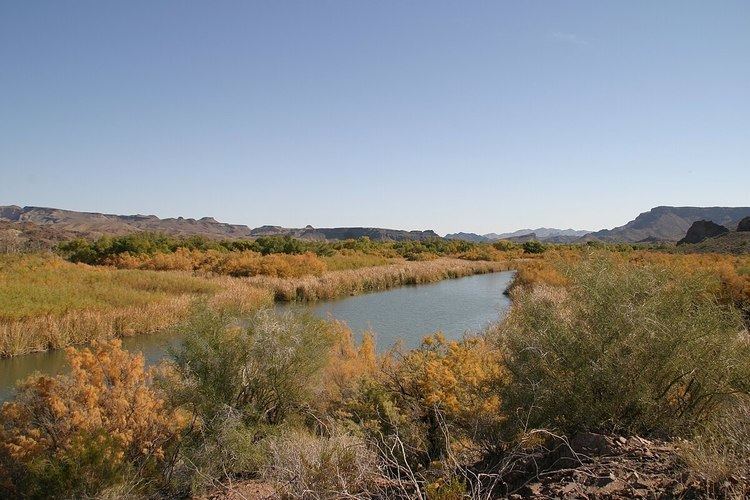Area 24.71 km² Established 1941 | Phone +1 928-667-4144 | |
 | ||
Governing body U.S. Fish and Wildlife Service Similar Buckskin Mountain State Park, Havasu Springs Resort, Arizona Waterspo Inc, BlueWater Resort & Casino, Black Meadow Landing | ||
The Bill Williams River National Wildlife Refuge protects the lower course of the Bill Williams River, to its mouth at Lake Havasu reservoir, in western Arizona. It is located within eastern La Paz and Mohave Counties, in the Lower Colorado River Valley region.
Contents
- Red tailed hawk calling at the bill williams river national wildlife refuge
- Natural historyEdit
- FloraEdit
- FaunaEdit
- Friends of the RefugeEdit
- References
The federal wildlife refuge is managed by the United States Fish and Wildlife Service. Recreation activities include nature walks, bird watching, hiking, and kayaking on the Bill Williams River.
Red tailed hawk calling at the bill williams river national wildlife refuge
Natural historyEdit
The habitats of the refuge are a unique blend of Mojave Desert and Sonoran Desert uplands, desert riparian zones, and marsh wetlands habitats, provides for a diverse array of flora and fauna.
FloraEdit
The ecosystem within the Bill Williams River National Wildlife Refuge is situated in an ecotone (transition zone) between Mojave Desert and Sonoran Desert ecoregions, increasing diversity of plant species present within it, There are few places in the Arizona deserts where one can view saguaro cacti forests, wetland broadleaf cattail (Typha latifolia) stands, and cottonwood woodlands in a single viewshed.
The refuge protects the largest remaining stand of the cottonwood-willow forests plant community along the lower Colorado River, with Fremont's cottonwood (Populus fremontii) and Goodding's willow (Salix gooddingii) the primary tree species.
FaunaEdit
The rare desert context riparian habitat of Bill Williams River NWR supports diverse resident fauna, and draws a variety of neotropical migratory birds, from Central and South America en route to their breeding grounds in the north.
The refuge is host to some endangered bird species, including the southwestern willow flycatcher (Empidonax traillii extimus), which nests on the refuge; and the Yuma rail (Rallus obsoletus yumanensis) which lives in the marsh's broadleaf cattail colonies, and is endemic to the Lower Colorado River Valley.
This refuge's wildlife includes:
Friends of the RefugeEdit
The Friends of the Bill Williams River and Havasu National Wildlife Refuges is a non-profit membership organization that supports the Bill Williams River National Wildlife Refuge and the Havasu National Wildlife Refuge up on the Colorado River. They advocate for and strive to obtain grants to support refuge projects, conduct fund-raising activities to support environmental education programs, assist refuge staff with several of the refuge's annual events, and help the Fish and Wildlife Service operate and maintain the refuge facilities and programs by providing volunteer labor.
